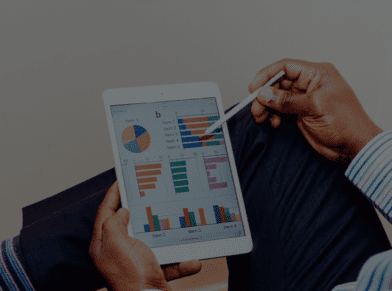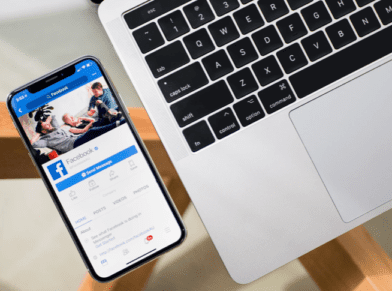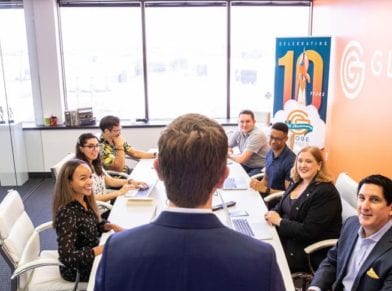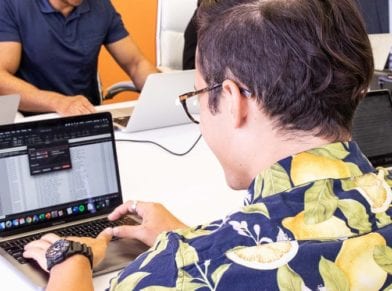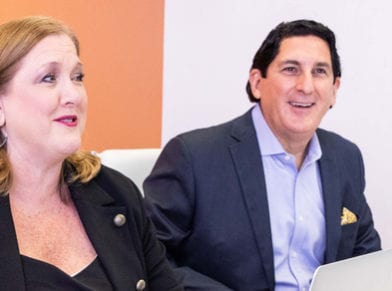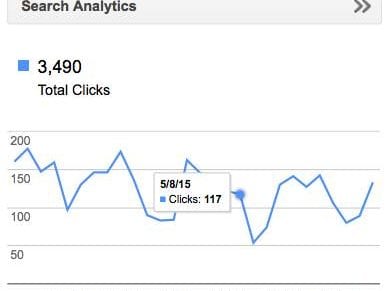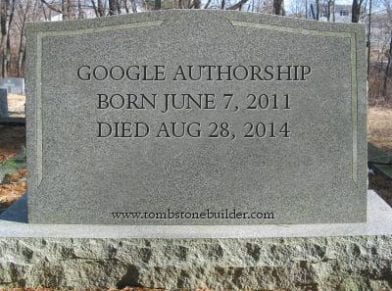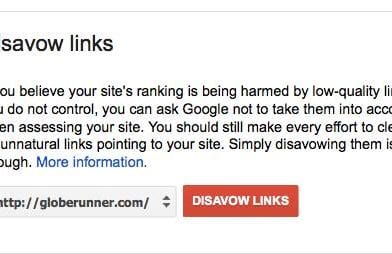5 TAKEAWAYS: GOOGLE’S PERFORMANCE SUMMIT KEYNOTE

by Alicia Kan
If you watched yesterday’s Google Performance Summit keynote, quite a bit of the information shared impacts marketers of every stripe — most notably local businesses and retail. Following are five of what we felt were the showstoppers, and potential implications for you.
(Want to watch the entire keynote instead? You can on YouTube.)
1. Farewell desktop; mobile, make yourself at home
Perhaps one of the most hated words is ‘paradigm shift’ but Sridhar Ramaswamy, Google’s VP for Advertising & Commerce, was pretty much expressing that with his choice of verbiage on mobile.
“The shift to mobile is no longer something that will happen or is happening. It has happened.” Factoid thrown out to support this: More than half of all global web traffic comes from tablets and smart phones. Cue the rush of marketers fleeing the desktop Titanic.
Google has reworked AdWords into a mobile-first tool and significant changes herald this shift in focus. Changes include the removal of the righthand ads on desktop (no wonder, because desktop’s kicked the bucket) and the recent expansion of the number of characters in description lines to 80, which totals 50% more text in text ads. Google’s test results showed that mobile users responded better to ads with longer headlines and click-through rate (CTR) improved by 20%.
Similarly, marketers will have more control over bidding. Starting over the next few months, advertisers can do individual bid adjustments over each device type and anchor keyword bids on the device(s) that work for them, within a single campaign. This announcement drew a round of applause.
Furthermore, display ads will also be able to unlock native ad territory. Publishers will be looking forward to that for sure.
IMPLICATIONS FOR MARKETERS B2C brands will be thinking furiously about how they can ramp up their mobile advertising with these new options. And, if it has been relegated to the side as an afterthought, bring mobile front and center in your chosen ad platforms. Anticipate budgets being shifted around and oh, horrors, for you to become a mobile advertising expert overnight.
2. The customer journey is moment-driven
Google has been heralding the ‘micro-moment‘ movement for some time now and to marketers, it can be daunting. According to Ramaswamy, successful brands are the ones who have rethought their approach to marketing by supplying actions that speak to consumers where they are, when they need them.
The example supplied was Macy’s, which masters I-want-to-buy moments by directing searchers to the right storefront, whether online or physical. People searching on laptops are directed to the Macy’s website; searchers using smartphones are sent to their nearest Macy’s, and have the ability to see whether the merchandise they seek is in the store.
Google wants us to latch onto these two words: Intent and context. What the consumer searches for and wants the minute he rolls out of bed and reaches for his smartphone is not what he wants when, say, he is searching idly for lunch takeaway options while coming back from the bank or gym.
IMPLICATIONS FOR MARKETERS The buyer persona exercise will expand to cover micro-moments. It won’t be enough to just know who’s buying what and why, but when and in what conceivable scenario.
3. Local search is a bigger deal than we all thought
VP for Search Ads Jerry Dischler shared research findings that supported this theme: 90% of purchases are made in stores, not online. Nearly 1/3 of mobile searches are related to location. In 2015, location-related mobile searches grew 50% faster than mobile searches overall. “Smartphones have created a new front door, bridging the physical and digital world,” he said. In that Stargate vein, Google has helpfully supplied us with new toys.
Over 1 billion people worldwide now use Maps, which was created to help people navigate the physical world. For added functionality, wouldn’t it help to also provide useful items like reviews to recommend where to go, popular times when you can escape crowds and lines, or real-time transit times that help you avoid delays? Google thinks so, therefore they’re allowing ads within Google Maps.
The next generation of local search ads will also have Pinterest-type pins relevant to the searcher. Advertisers can customize the page with content or offers unique to the location that would enhance foot traffic to the establishment.
Google has already been testing the marrying of data between search, location (opt-in) and beacons to determine what online behavior truly drives offline purchase. According to the 10 big box retailers that participated in the study, the number of incremental visits driven by mobile search ads exceeded online conversions.
IMPLICATIONS FOR MARKETERS Finally, there’s a way to directly link search and online advertising budgets to offline purchase other than coupons — very handy when budget-planning time rolls around. Smart small- and medium-sized businesses (SMBs) will study how they can take full advantage of local’s growing halo. We foresee location-based marketing, which had its heyday in 2010, to make a comeback.
4. Machine learning is helping us target and understand untapped customers
Because marketers can’t keep track of Stacy, a 32-year-old Midwestern mother of a two-year-old with another child on the way, who is shopping for a minivan. A Google longitudinal study on Stacy unearthed 900 touch points from her in three months, from researching vehicle reviews during playdates to checking out videos in the rare spare minute. That’s a lot of micro-moments for just one consumer. Multiply that with all your other consumers and it gets tricky.
Fortunately Google’s machine learning can handily assist with identifying and reaching the Stacies of this world. With data and automation, marketers can be there during critical micro-moments. Display advertisers can turn to programmatic to deliver the right message at the right time. DoubleClick Manager and Google Display Network will deliver ads based on intent, context and demographics.
Google is also launching a cross-exchange inventory that will reach additional websites and apps across the world, said Brad Bender, VP of Display and Video Ads for Google. Additionally, they’ve just launched Similar Audiences for Search, a new product that allows remarketing lists to extend to buyers unfamiliar with a brand. Marriott has already tested Similar Audiences and reported a quadrupled ROI. Similarly, Fiat Chrysler has experimented with the product and bid aggressively on new audiences that have a lot in common with their consumer. The results were 5% more click-through rates (CTR) and 14% less cost per acquisition (CPA).
Bender said a parallel offering called Demographics for Search Ads is set to launch in the foreseeable future.
IMPLICATIONS FOR MARKETERS Remember that legendary story in 2012 about Target exposing a teen girl’s pregnancy? That was done with the help of statistical genius Andrew Pole. From the sound of it, Google is set to make online targeting even more eerily accurate. Except this time there will be less perplexed parents — the coupons should be delivered to a smartphone given the emphasis on mobile.
5. Reporting changes are more than a facelift
In March, SEOs learned of the new 360 Suite that integrated six Google products, from Analytics to Tag Management, into one enterprise platform. Significant news today:
- All 360 Analytics customers can join the closed beta
- Data Studio 360 will have Google Docs’ collaboration ability, allowing several parties to edit at the same time to create rich, dynamic reports that integrate data from different sources — very neat stuff demonstrated by Babak Pahlavan, Google’s Senior Director of Measurement & Analytics
- Integration of Google Assistant into Analytics: You’ll soon be able to ask a question about Analytics findings via voice or a typed question — even more impressive demo-ing by Pahlavan
- A free version of Data Studio 360 for up to five reports was launched today in the US for all Analytics accounts (although we haven’t seen any sign of it yet). The free version will be rolled out across the world right after
AdWords was not forgotten in the redesign. Samantha Lemmonier, Director of Engineering for the AdWords platform, showed a new homepage with insights at-a-glance, such as top performing campaigns, top devices, even best time of day to run a campaign. Advertisers can supply their objectives and actions they want to drive; AdWords will offer a campaign creation flow.
Best of all, no migration or upgrade is required, Lemmonier said. Campaigns will run the same as they do today. The AdWords team will continue building out what she called ‘the [new] AdWords experience’ and invite marketers to try it out.
IMPLICATIONS FOR MARKETERS Start thinking of the five clients who should get the Data Studio 360 report. Possibly prospects to impress? Presenting Analytics data to clients face-to-face should also be a novel experience now that you can verbally ask for insights and get a Siri-like reply (for safety, practice first so you get the right answer).
IMPLICATION FOR APPLE Oh dear. Siri is going to have to one-up this.









